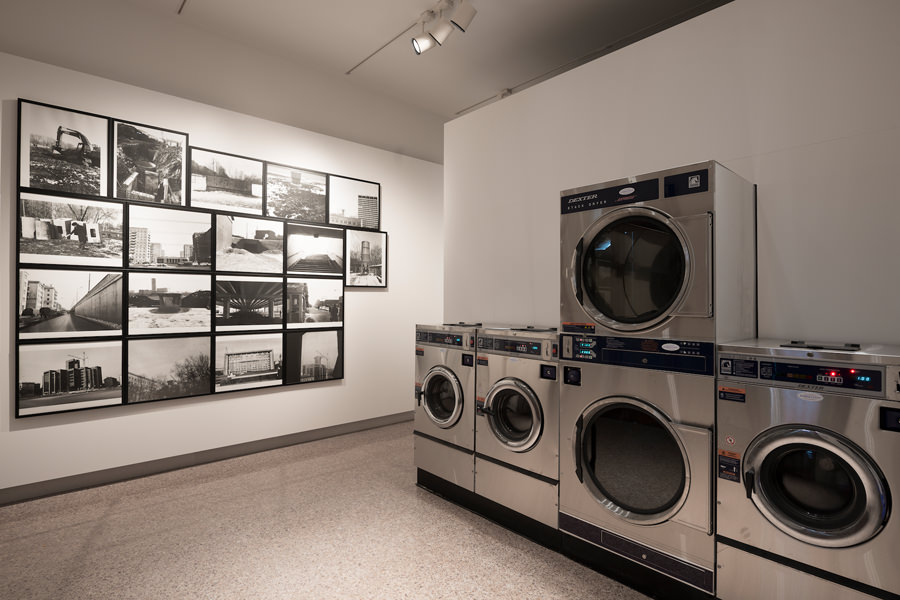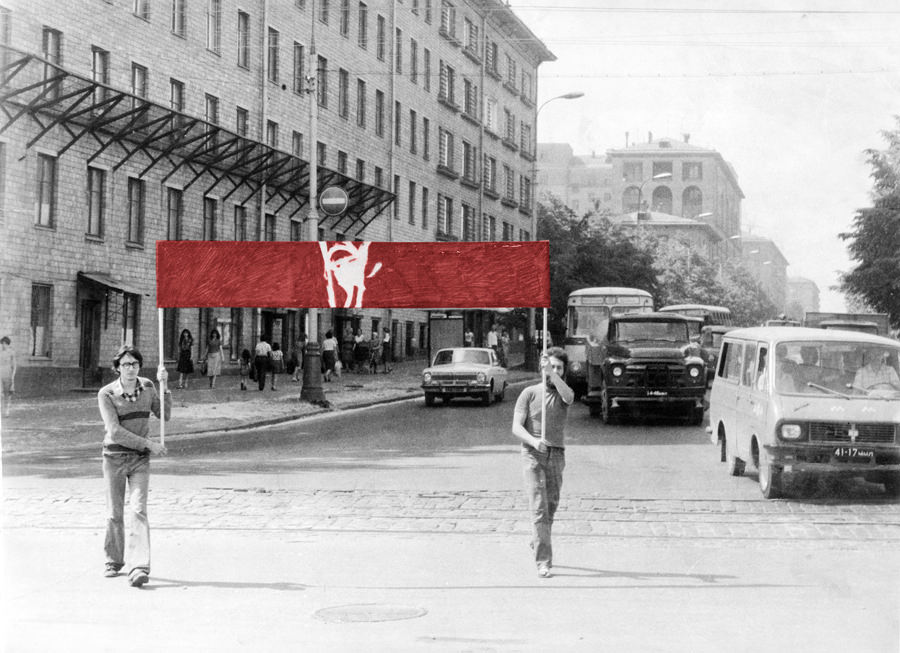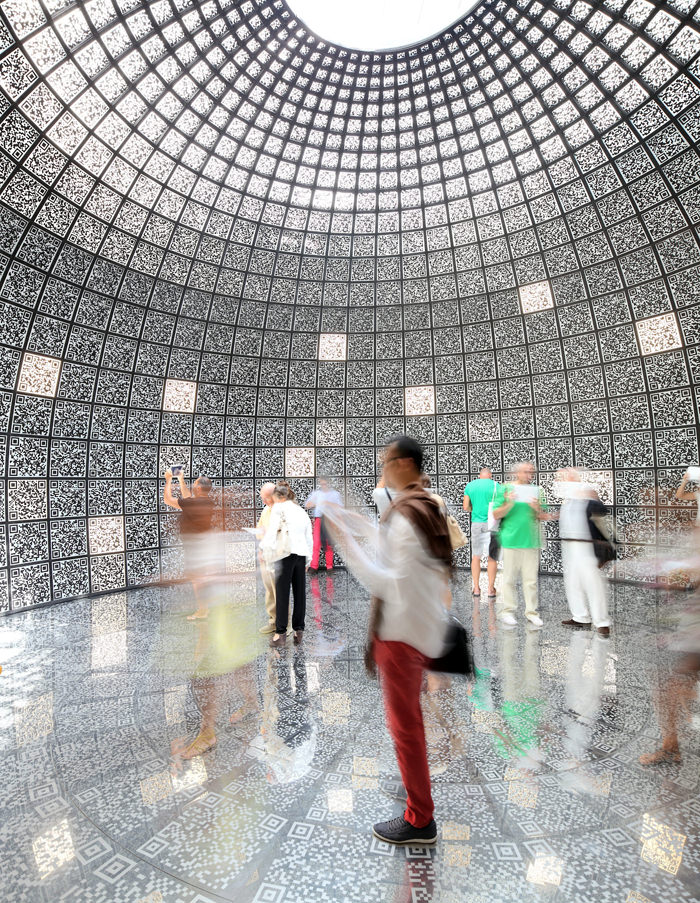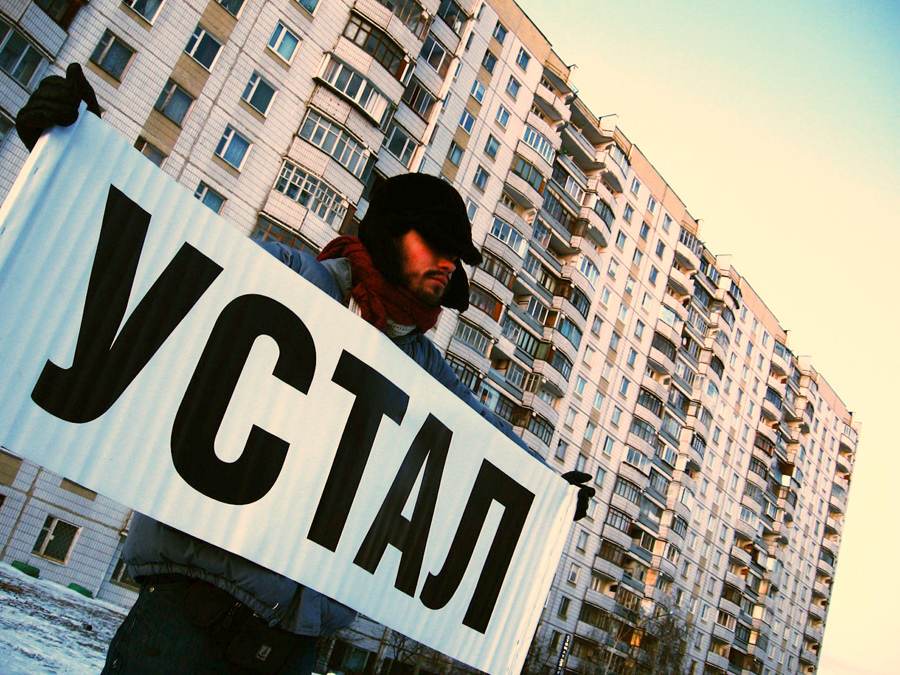-
THE WAY OF ENTHUSIASTS
An exhibition worth the boat ride
Text by Elvia Wilk
Urban Fauna Lab’s installation in the Casa dei Tre Oci includes an imported window that obscures the building’s lovely architectural features, as well as a laboratory table with a collection of materials for urban experiments. Urban Fauna Lab (Alexey Buldakov, Anastasia Potemkina, Ekaterina Zavialova), Expansive Species of MELZ, 2012. (Photo: ©Courtesy Yuri Palmin and V-A-C Foundation)
-
In the Giardini, Russia makes a gigantic leap from past to future, fast-forwarding from the 1960s Soviet Union directly into tomorrow. Across the water on the island of Giudecca, an art exhibition pauses in Russia’s present, creating a bridge between Soviet history and Russia today. In contrast to the pavilion’s enthusiastic presentation of a governmental initiative, the aptly-titled exhibition The Way of Enthusiasts provides a moment for critical reflection upon the history of Soviet architecture through the lens of Russian art.
Focusing partly on artistic works produced during or immediately following the collapse of Russia’s mid-century grand-scale social housing projects, the exhibition also incorporates contemporary artists investigating the remnants and echoes of the period today. The show’s title is taken from a Moscow avenue (“Shosse Entuziatov”), a nineteenth-century connecting route between the city center and Siberian zones of exile and imprisonment. Optimistically re-named in the 1920s, the street’s moniker is indicative of an era of gusto for the future and a glorification of the past – highlighting the rupture between Soviet public housing schemes and their actualization.

The young artists Arseny Zhilyaev installed a (usable!) soviet-style launderette, commenting on enforced shared use of amenities and lack of private spaces during the communist era. Laundry, 2012. (Photo: Courtesy Yuri Palmin and V-A-C Foundation, 2012)

The Gnezdo Group worked together between 1975 and 1979, staging protests and fostering political discussion in Moscow’s underground. Gnezdo Group, Demonstration: Art into Masses. Moscow, 1978. (Photo: Courtesy V-A-C Foundation.)
-


Andrey Kuzkin. Ustal (Tired), Action documentation, 2008.
On the Russian Pavilion’s ground floor, viewers peep through magnifying holes in the wall to see images of Soviet communities built during the cold war for scientific research. On the floor above - pictured here - viewers receive iPads to access QR codes coating three blinding light-up disco rooms. The iPads display extensive architectural proposals for a scientific community of (Photo: Thomas Spier)
The three-floor exhibition is a spatially and topically expansive curatorial effort, and the artwork is presented in fluent interaction with the architecture: the stunning Casa dei Tre Oci palazzo, a Venice landmark built at the turn of the last century. Many works converse directly with the building – for instance, Urban Fauna Lab imported a dirty, scratched-up window to obscure one of the Casa’s three magnificent “eye” windows, commenting upon the lack of both beauty and transparency in many designs for social housing.
The Way of Enthusiasts is not only one of the biennale’s most appealing exhibitions to non-architect audiences, but also to a contemporary generation interested in curatorial tactics that can be borrowed and shared between disciplines. Exhibiting architecture is as much a presentation of models and plans as it is a communication of the intangible, inarticulable feelings communicated through space. Enthusiasts is worth the vaporetto trip to Giudecca due to the wealth of information it presents – but moreover because of its emotional effectiveness, far beyond the didactic or pedagogical.

-
Search
-
FIND PRODUCTS
PRODUCT GROUP
- Building Materials
- Building Panels
- Building technology
- Façade
- Fittings
- Heating, Cooling, Ventilation
- Interior
- Roof
- Sanitary facilities
MANUFACTURER
- 3A Composites
- Alape
- Armstrong
- Caparol
- Eternit
- FSB
- Gira
- Hagemeister
- JUNG
- Kaldewei
- Lamberts
- Leicht
- Solarlux
- Steininger Designers
- Stiebel Eltron
- Velux
- Warema
- Wilkhahn
-
Follow Us
Tumblr
New and existing Tumblr users can connect with uncube and share our visual diary.
»I hate vacations. If you can build buildings, why sit on the beach?«
Philip Johnson
Keyboard Shortcuts
- Supermenu
- Skip Articles
- Turn Pages
- Contents


